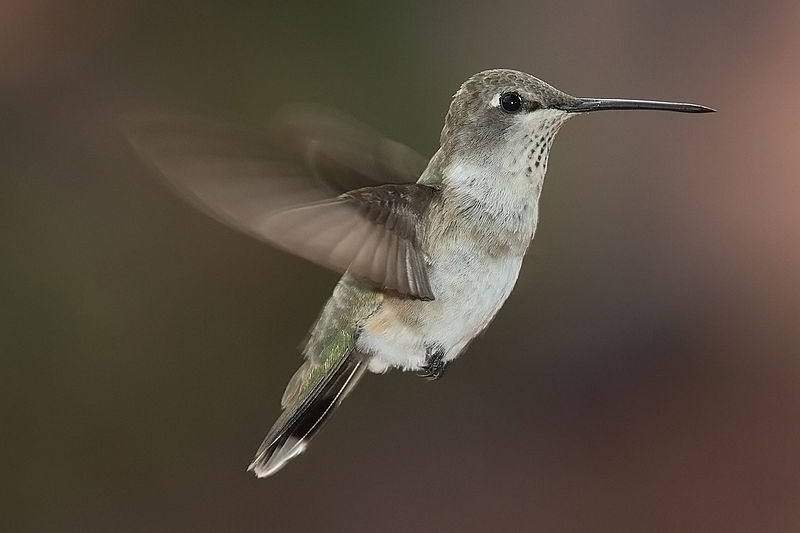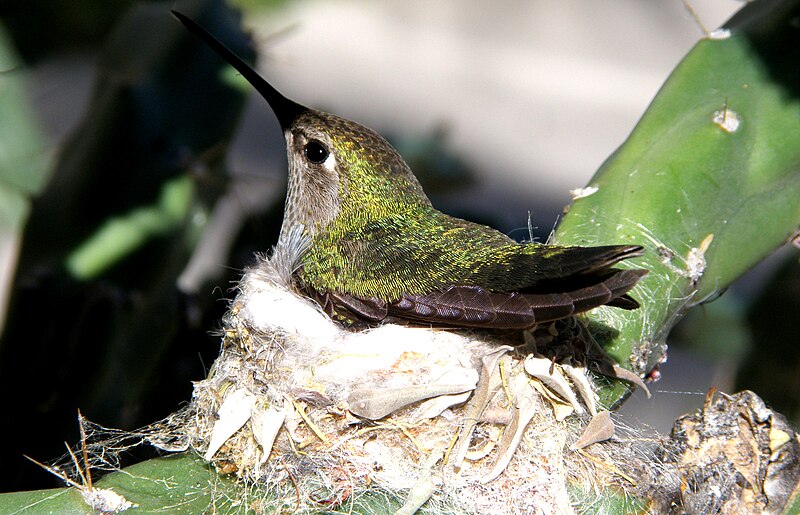Hello everybody! Sorry I'm posting a day late, but I've had a really hectic week and haven't had time to write much for this website for this week. So this week, Joy wrote today's article and, since I have no updates on any upcoming movies or my stop-motion series called Planet of the Dinosaurs, we'll just start straight off with Joy's article:
Today, I'd like to talk about hummingbirds, the small bird whose egg is the size of a jellybean. It has a a straw-like beak to reach the nectar inside of flowers. However these birds can be a bit particular in what type of flower they drink out of and if it has just the right amount of sugar in it. Most hummingbirds go for red, orange, and bright pink flowers. Let's learn more about hummingbirds!
 |
| This is a female black-chinned hummingbird. Did you know hummingbirds get their names from the "humming-like" sound that their wings make? |
The hummingbird's wings can beat from 12-100 times a second! That is pretty fast. To get the water, such as rain, off their back, the bird shakes itself off like a dog does. Funny huh? It's heartbeat is fast too - up to 1,260 per minute! Hummingbirds are mostly found in North and South America. They migrate south and land in Mexico, Central America, and Florida.
 |
| This is a male ruby-throated hummingbird. The rich colors of hummingbirds don't come from pigment, but actually get their colors from iridescence. |
Their nest can be as small as a walnut. Most hummingbird nests are bound together by spider silk. The male doesn't take any part in the nest building. Two eggs are laid in the nest and they hatch around 14-26 days. The mother bird feeds her babies the same way as penguins. They take the food in their beak and eventually regurgitate it for the young to eat (I don't think I'd like to be a baby bird). The hummingbird's wings have a prism effect and therefore the color can change from an odd-looking bird with white downy feathers, to an adult "hummer" with vibrant red and green, such as the ruby-throated hummingbird above. That effect comes from the sunlight.
 |
| Hummingbirds can make their tiny nests on really thin objects such as this cactus "leaf".
People enjoy watching these birds as they visit flowers from flower. Humans have set up hummingbird feeders. Here's some tips on how to lure hummingbirds to your bird feeder:
These birds are just a few of many wondrous creatures. Just look around and you will find yourself in another world!
Thanks for coming today, next week, I should have time to write the article I intended for this week. See you then!
PS: To post a comment (this is highly
encouraged), please simply click the post you wish to comment on,
scroll to the bottom of the page and put what you wish to say or ask
in the comment box. Then in the box below the comment box choose who
you’re going to comment as. And then click preview or
publish. If you aren’t signed into Google, you’ll be asked
to type in a word and a number in the space provided. Type the word,
put a space and then put the number. Then your comment is on the
blog!
PS 2: Have a puzzling question about
animals (including dinosaurs), myself, my latest book, my stop-motion
movies, Creation or etc? Please post your question as a comment or
send me an email at animaladventures@aol.com.
PS 3: What’s the latest scoop? Check
it out at SMILEY’S
NEWS.
PS 4: Be sure to comment on the latest
stop-motion movies too, this will help me improve them.
|
No comments:
Post a Comment